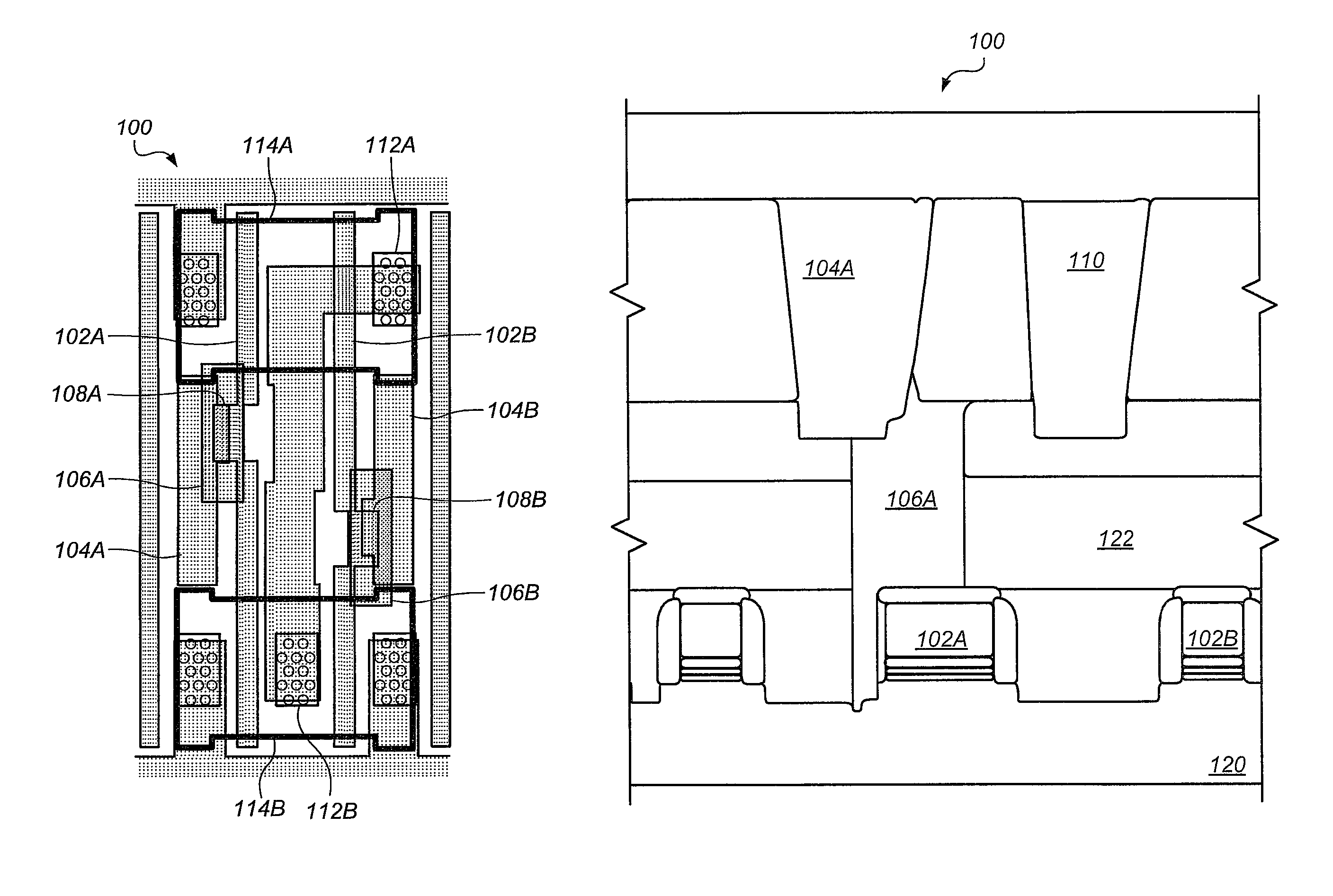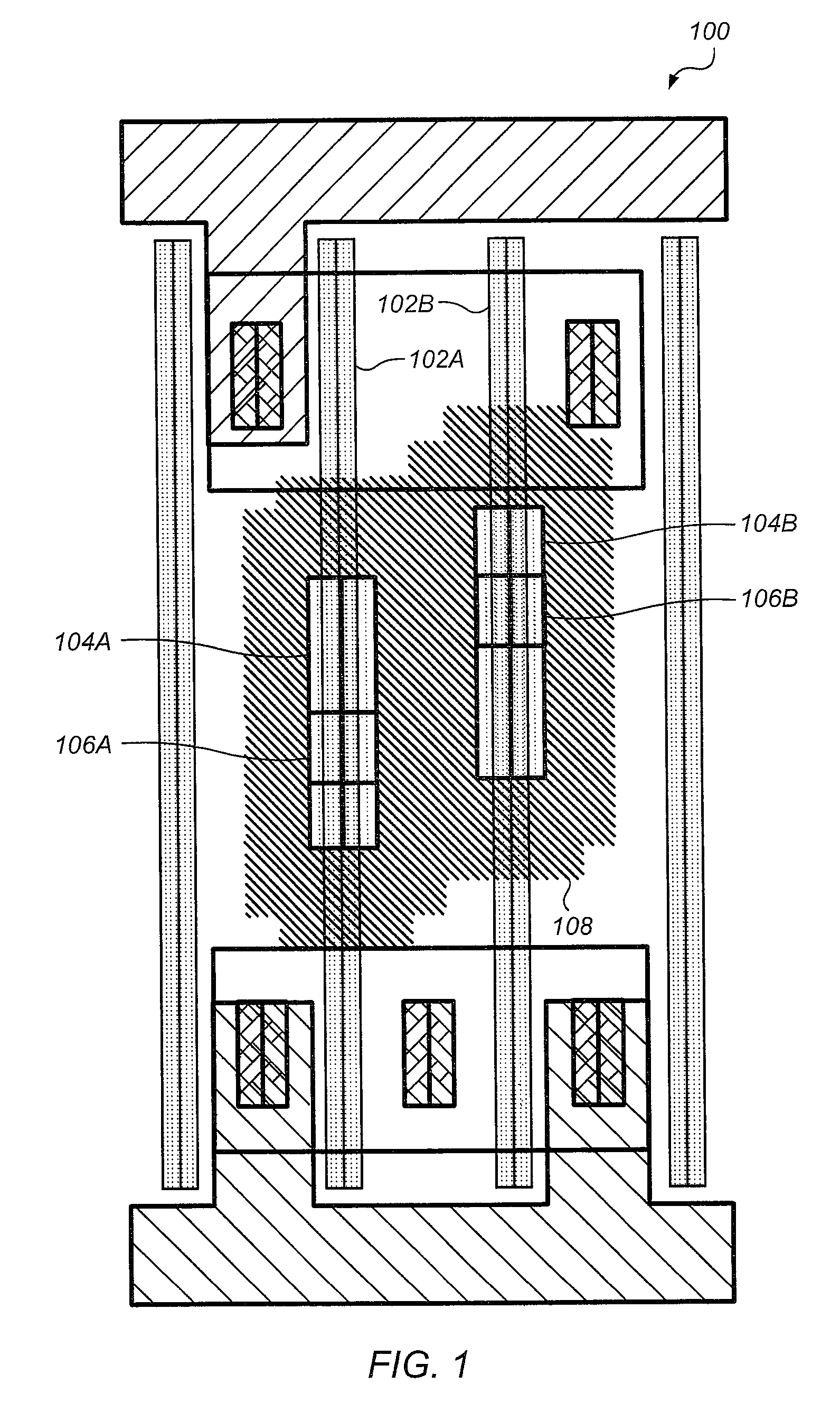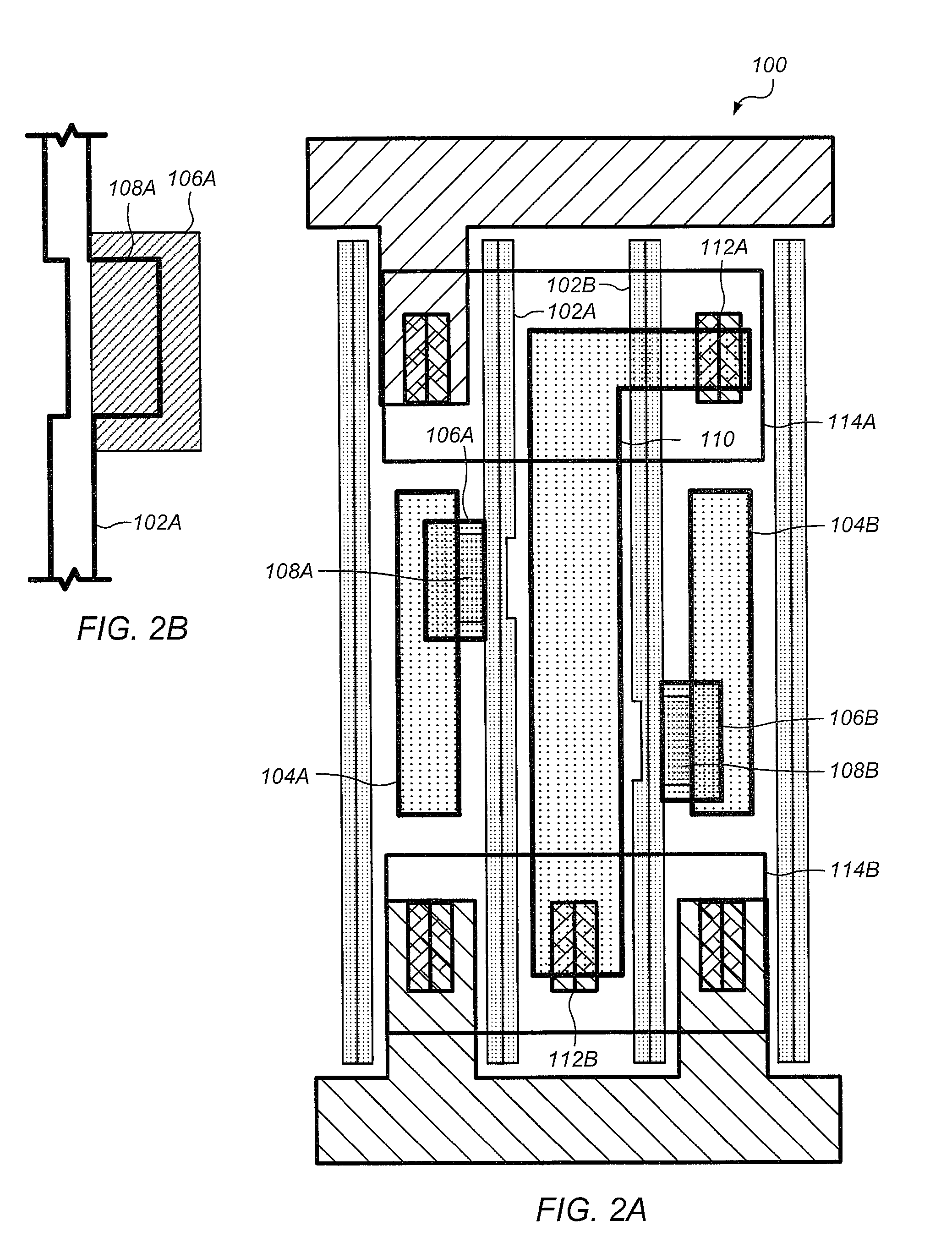Handshake structure for improving layout density
a technology of layout density and handshake, which is applied in the direction of semiconductor devices, semiconductor/solid-state device details, electrical equipment, etc., can solve the problems of misalignment of m1 wires (either contact wires or vertical wires), overlay errors, and certain practical limitations, and increase the overall chip area
- Summary
- Abstract
- Description
- Claims
- Application Information
AI Technical Summary
Benefits of technology
Problems solved by technology
Method used
Image
Examples
Embodiment Construction
[0014]In certain embodiments, a semiconductor device includes a gate on a semiconductor substrate. One side wall of the gate may include at least one protrusion and an opposite side wall of the gate may include at least one depression. An insulating layer may be disposed substantially over the gate. A contact may be formed through the insulating layer. The contact may at least partially overlap at least one of the protrusions in the gate. A metal layer may be disposed on the insulating layer. The metal layer may include a first metal layer structure shifted to a first side of the gate. The first structure may at least partially overlap the contact such that the contact electrically couples the first structure to the gate through the insulating layer.
[0015]In certain embodiments, a semiconductor device fabrication process includes forming the gate on the semiconductor substrate with one side wall of the gate including at least one protrusion and an opposite side wall of the gate incl...
PUM
 Login to View More
Login to View More Abstract
Description
Claims
Application Information
 Login to View More
Login to View More - R&D
- Intellectual Property
- Life Sciences
- Materials
- Tech Scout
- Unparalleled Data Quality
- Higher Quality Content
- 60% Fewer Hallucinations
Browse by: Latest US Patents, China's latest patents, Technical Efficacy Thesaurus, Application Domain, Technology Topic, Popular Technical Reports.
© 2025 PatSnap. All rights reserved.Legal|Privacy policy|Modern Slavery Act Transparency Statement|Sitemap|About US| Contact US: help@patsnap.com



